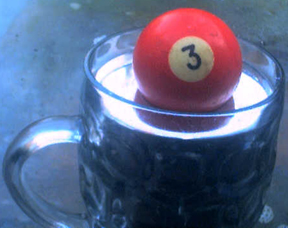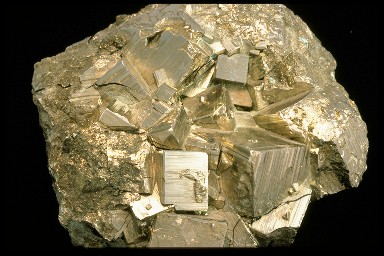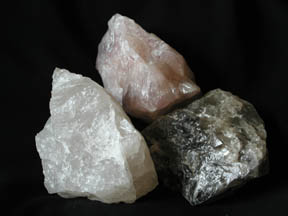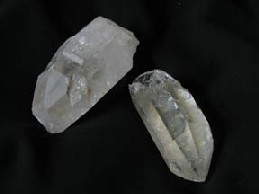The periodic table of the elements with metallic elements colored in green, nonmetallic in orange and metalloids in blue.
Click on image for full size
L.Gardiner/Windows to the Universe
Metals, Nonmetals, & Metalloids
The elements in the periodic table on the left are divided into three groups.
The elements in the table that have green squares are called metals. Most elements are metals. They are usually shiny, seem heavy for their size and only melt at very high temperatures. Heat and electricity travel easily through metals, which is why it is not wise to stand next to a flagpole during a thunderstorm!
The elements in the table that have orange squares are called nonmetals. Their surface is dull, not shiny. These elements seem light for their size and will melt at low temperatures.
Some elements in the table have blue squares. They are called metalloids. They are somewhat like metals and somewhat like nonmetals. Some are shiny and others are dull. Heat and electricity can travel through them but not as easily as in metals.
Last modified April 18, 2003 by Lisa Gardiner.
You might also be interested in:

An element (also called a "chemical element") is a substance made up entirely of atoms having the same atomic number; that is, all of the atoms have the same number of protons. Hydrogen, helium, oxygen,
...more
Everything you see around you is made of tiny particles called atoms. Atoms are so small that you can’t see them but scientists have found out that there are many different types of atoms, and each type
...more
Density is a measure of how much mass is contained in a given unit volume (density = mass/volume). Put simply, if mass is a measure of how much ‘stuff’ there is in an object, density is a measure of how
...more
Solid is one of the four common states of matter. The three others are gas, liquid, and plasma. There are also some other exotic states of matter that have been discovered in recent years. Unlike liquids
...more
Spotting minerals is fun! There are many different types of minerals. Each has a different name and special traits. You can learn more about minerals by looking closely at them to understand their special
...more
This mineral is called quartz! Sometimes it looks white like milk but usually it looks clear like glass, sometimes with a little pink or gray tinge of color. You can find crystals of quartz in many different
...more
Mica minerals make some rocks sparkle! Look for them in your igneous and metamorphic rocks. Do they make your rocks sparkle? They break into flat plates because they have cleavage.
...more













